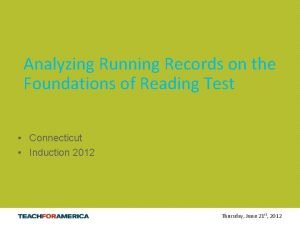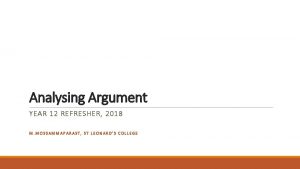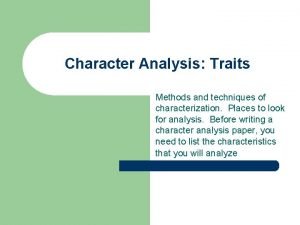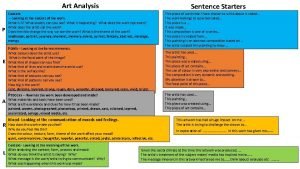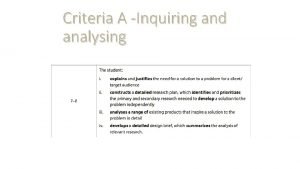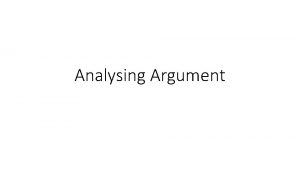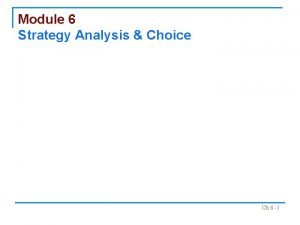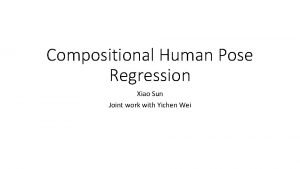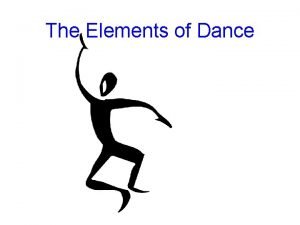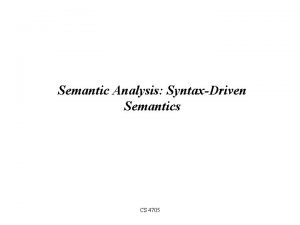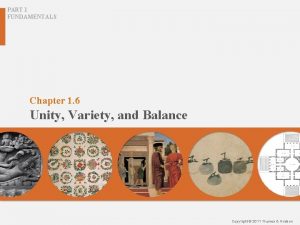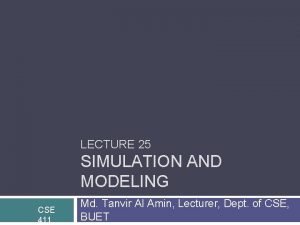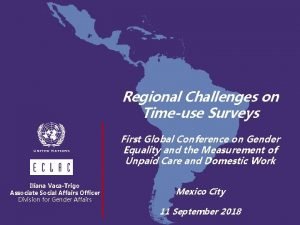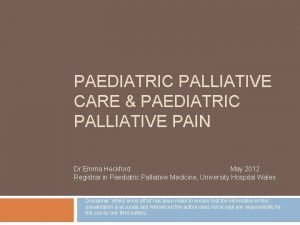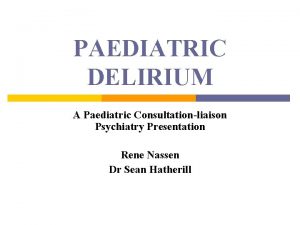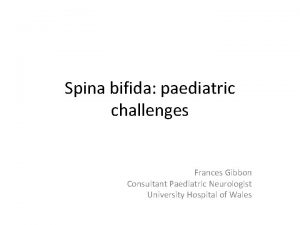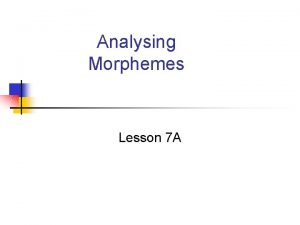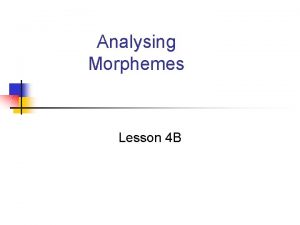Analysing compositional timeuse data in paediatric populations Dr























- Slides: 23

Analysing compositional time-use data in paediatric populations Dr Jill Haszard, Department of Medicine & Biostatistics Unit Dr Kim Meredith-Jones Assoc Prof Sheila Williams Prof Rachael Taylor

Predictors of healthy development in childhood ∎ ∎ ∎ Diet Environment Stress Sleep Physical activity Sedentary behaviour

Sleep and physical activity Lower risk of obesity Healthier dietary habits Improved behaviour Better academic performance ∎ Fewer mental health disorders ∎ ∎ Sedentary behaviour ∎ Higher risk of obesity ∎ Mental health disorders ∎ Less healthy dietary habits ∎ Poorer academic performance ∎ Behavioural issues

Baseline measures from an obesityprevention cluster-RCT in children ∎ PLAY – 574 children aged 8 years of age (recruited through schools) Farmer, V. L. , Williams, S. M. , Mann, J. I. , Schofield, G. , Mc. Phee, J. C. , & Taylor, R. W. (2017). The effect of increasing risk and challenge in the school playground on physical activity and weight in children: a cluster randomised controlled trial (PLAY). International Journal of Obesity, 41(5), 793 -800.

How to measure these activities ∎ ∎ ∎ Accelerometers measure 24 -hour time use Acti. Cal (Mini-Mitter, Bend, OR) Worn at the waist for 7 days Measures ‘counts’ in 15 -second epochs Different levels of counts/epoch are assigned to the different levels of activity: sleep, sedentary, light, moderate, and vigorous physical activity

The 24 -hour window Average time-use for 8 year-olds Sleep 5% 23% Sedentary 41% Light activity 32% Moderate to vigorous physical activity

Compositional data ∎ Relative distribution, not absolute ∎ The sum of the parts is constrained (eg 100% or 24 hours) ∎ A strong history in geology ∎ Microbiota (relative abundance of microbiota in a faecal sample) ∎ Macronutrient intake (fat/protein/carbohydrate) ∎ How a consulting statistician allocates their work-time ∎ Many others!

Problems with analysing compositional data ∎ Not independent ∎ Collinearity ∎ Finite time period (constrained) ∎ Violate the basic assumptions for multivariate statistical methods (such as regression), which were developed for unconstrained data

Karl Pearson (1897): “spurious correlation” with ratio variables John Aitchison (1982): proposed a log-ratio approach

Log-ratio approach ∎ Transform data into log-ratios: now in real space ∎ Can use: additive log-ratios, centered logratios, or isometric log-ratios ∎ Isometric log-ratios are recommended because the relative positions of the data points are preserved from the constrained (simplex) to the unconstrained, real space

Isometric log-ratios With 24 -hour time-use variables these become:

Interpretation: need to have meaningful estimates! To be able to judge the strength of association with a variable like BMI z-score we need to have meaningful estimates. *Note that we measure body mass index (BMI) in children using z-scores based on standard growth charts

Regression model to estimate BMI z-score:

Interpretation Note that the first isometric log-ratio coordinate is proportional to the log-ratio of sleep to the geometric mean of all other components (i. e. sedentary, light PA, and MVPA). We can use the regression coefficient of this coordinate to provide a meaningful estimate of association.

Interpretation Dumuid et. al. present a formula for backtransforming the coefficient of the first isometric log-ratio coordinate, using a proportional change to the mean composition.

Estimates for other components (sedentary, light, mvpa) ∎ Permute the components and create a set of coordinates for each component ∎ Run a regression model for each set of coordinates

24 hour time-use in 8 year-olds and BMI z-score (n=574) Component Regression coefficient (SE) P-value 10% relative difference in minutes Estimated difference (95% CI) in BMI z-score with a 10% increase in component Sleep -0. 89 (0. 44) 0. 041 57 -0. 13 (-0. 25, -0. 01) Sedentary 0. 23 (0. 32) 0. 480 46 0. 03 (-0. 05, 0. 11) Light PA 1. 37 (0. 31) <0. 001 32 0. 15 (0. 08, 0. 21) MVPA -0. 70 (0. 15) <0. 001 6. 9 -0. 06 (-0. 09, -0. 03)

Presentation of estimates in minutes compared to proportions Component 10% relative difference in minutes Estimated difference (95% CI) in BMI z-score with a 10% increase in component Estimated difference (95% CI) in BMI z-score with a 10 minute increase in component Sleep 57 -0. 13 (-0. 25, -0. 01) -0. 02 (-0. 05, -0. 001) Sedentary 46 0. 03 (-0. 05, 0. 11) 0. 01 (-0. 01, 0. 02) Light PA 32 0. 15 (0. 08, 0. 21) 0. 05 (0. 03, 0. 07) MVPA 6. 9 -0. 06 (-0. 09, -0. 03) -0. 09 (-0. 13, -0. 05)

Presentation of estimates for 10% reallocation between components Component …to sleep From sleep… …to sedentary …to light PA …to MVPA 0. 11 (-0. 03, 0. 24) 0. 28 (0. 14, 0. 42) -0. 30 (-0. 50, -0. 09) 0. 14 (0. 04, 0. 24) -0. 34 (-0. 48, -0. 21) From sedentary… -0. 08 (-0. 19, 0. 03) From light PA… -0. 17 (-0. 25, -0. 09) -0. 11 (-0. 18, -0. 04) 0. 06 (0. 02, 0. 09) 0. 07 (0. 04, 0. 10) From MVPA… -0. 37 (-0. 51, -0. 23) 0. 09 (0. 06, 0. 13)

Presentation of estimates for 10% reallocation between components Component …to sleep From sleep… …to sedentary …to light PA …to MVPA 0. 11 (-0. 03, 0. 24) 0. 28 (0. 14, 0. 42) -0. 30 (-0. 50, -0. 09) 0. 14 (0. 04, 0. 24) -0. 34 (-0. 48, -0. 21) From sedentary… -0. 08 (-0. 19, 0. 03) From light PA… -0. 17 (-0. 25, -0. 09) -0. 11 (-0. 18, -0. 04) 0. 06 (0. 02, 0. 09) 0. 07 (0. 04, 0. 10) From MVPA… -0. 37 (-0. 51, -0. 23) 0. 09 (0. 06, 0. 13)

In summary ∎ Compositional data should be analysed appropriately: using log-ratios ∎ Presentation of the results from a regression model needs to be appropriate & interpretable: § use proportion of time reallocated, not minutes, § report reallocation from one component to all others, not from one component to another.

Acknowledgements Co-authors: Professor Rachael Taylor (Principal Investigator) Dr Kim Meredith-Jones (Accelerometry) Associate Professor Sheila Williams (Biostatistician) To the authors of the publications I have drawn on today (see references) Many thanks to all of the participants and

References Dumuid, D. , Stanford, T. E. , Martin-Fernández, J. -A. , Pedišić, Ž. , Maher, C. A. , Lewis, L. K. , Karel, H. , Katzmarzyk, P. T. , Chaput, J. -P. , Fogelholm, M. , Hu, G. , Lambert, E. V. , Maia, J. , Sarmiento, O. L. , Standage, M. , Barreira. T. V. , Broyles, S. T. , Tudor-Locke, C. , Tremblay, M. S. , & Olds, T. (2017). Compositional data analysis for physical activity, sedentary time and sleep research. Statistical Methods in Medical Research. https: //doi. org/10. 1177/0962280217710835 Chastain S. F. , Palarea-Albaladejo J. , Dontje M. L. , & Skelton D. A. (2015). Combined effects of time spent in physical activity, sedentary behaviors and sleep on obesity and cardio-metabolic health markers: a novel compositional data analysis approach. PLOS ONE. 10: e 0139984. Aitchison, J. A concise guide to compositional data analysis. Laboratório de Estatística e Geoinformação [online], http: //www. leg. ufpr. br/lib/exe/fetch. php/pessoais: abtmartins: a_c oncise_guide_to_compositional_data_analysis. pdf (2003).
 Analysing market data
Analysing market data Analysing running records
Analysing running records Horse cartoon images
Horse cartoon images Analysing argument
Analysing argument How do consumers respond to various marketing efforts
How do consumers respond to various marketing efforts The prohibited chow pest
The prohibited chow pest What are methods of characterization
What are methods of characterization Matching stage of strategy formulation framework
Matching stage of strategy formulation framework Sentence starters for art
Sentence starters for art Analysis of business transactions
Analysis of business transactions Inquiring and analysing
Inquiring and analysing Strategic analysis and choice in strategic management
Strategic analysis and choice in strategic management Analysing argument
Analysing argument Analysing the 6 strategic options megxit
Analysing the 6 strategic options megxit Compositional modes for digital media
Compositional modes for digital media Chen-hsuan lin
Chen-hsuan lin Compositional human pose regression
Compositional human pose regression What are the three chemical layers of earth
What are the three chemical layers of earth Size element of dance
Size element of dance Associative meaning in semantics
Associative meaning in semantics Semantics vs syntax
Semantics vs syntax Unity introduction
Unity introduction Compositional technique
Compositional technique Liu xran
Liu xran

